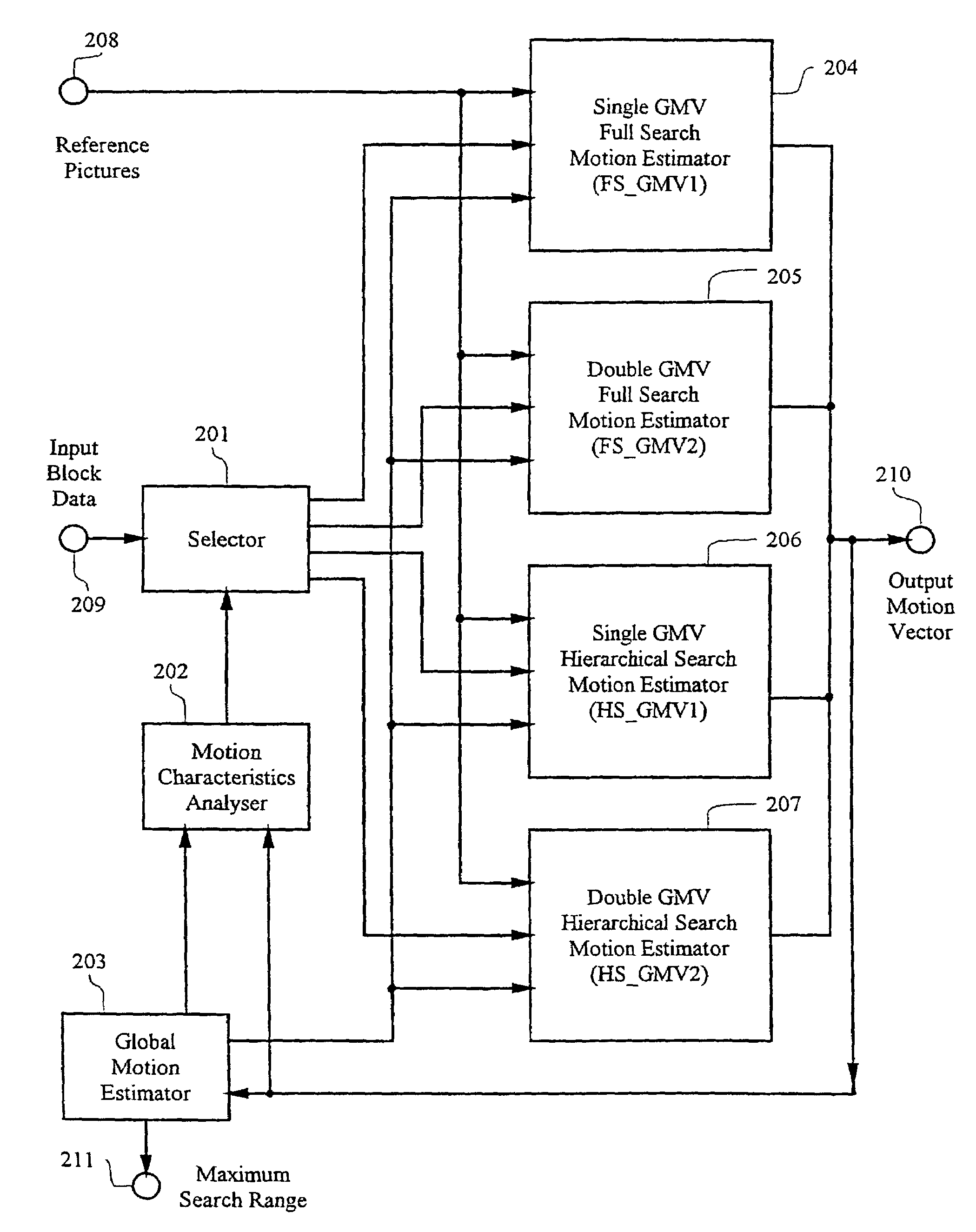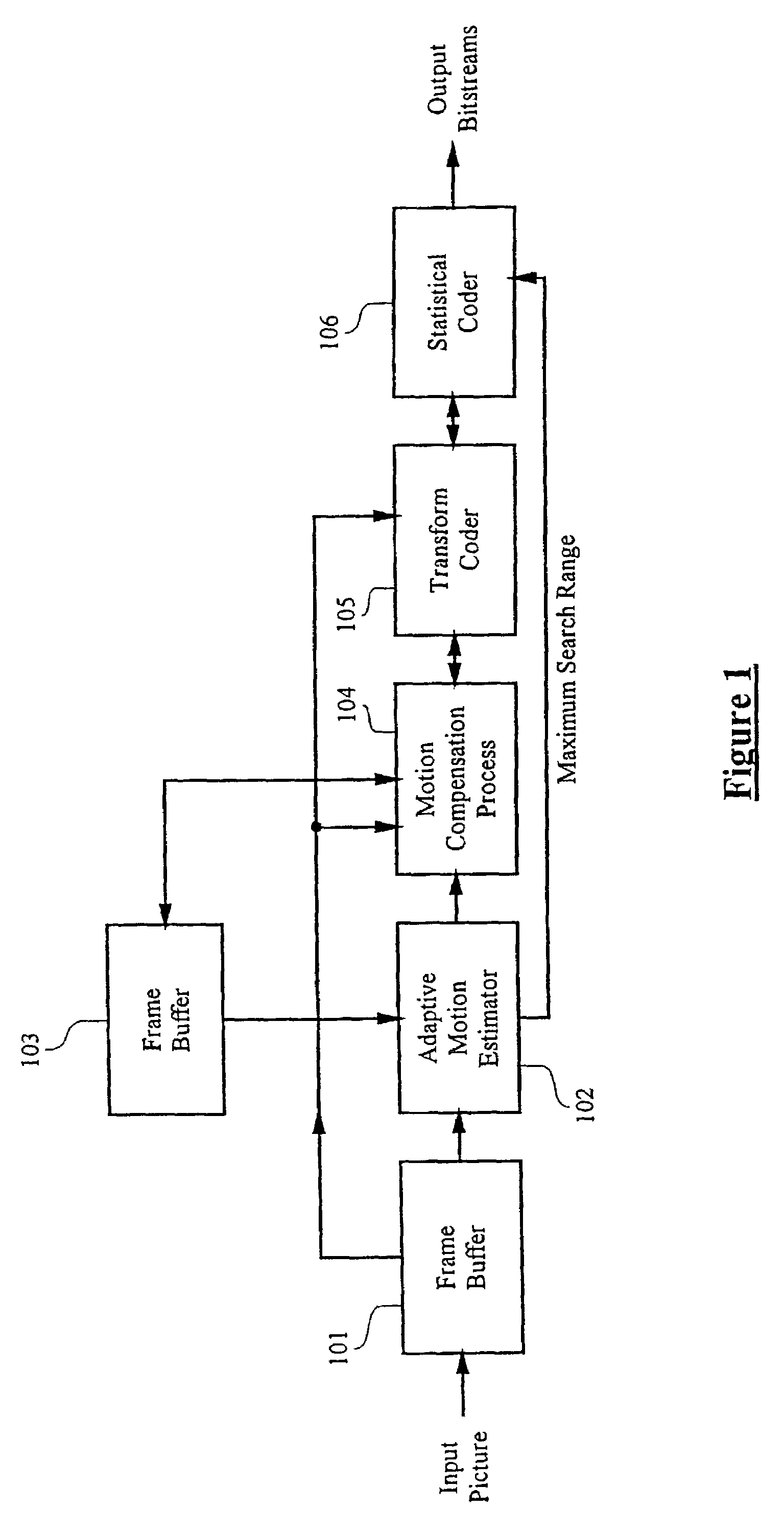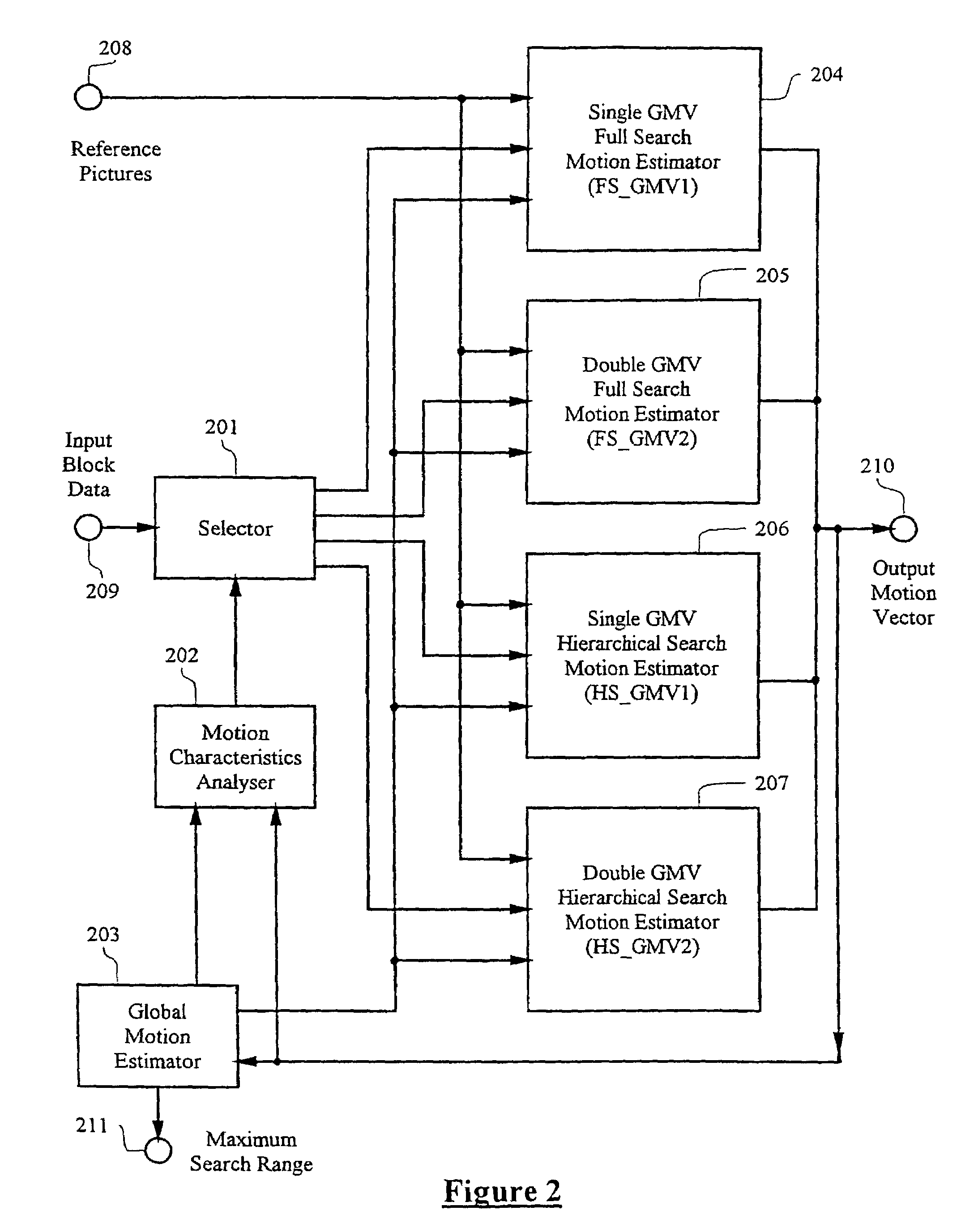Adaptive motion estimator
a motion estimator and adaptive technology, applied in image data processing, color television, television systems, etc., can solve the problems of inability to address the problem of varying motion characteristics within a moving sequence, the size of the search window has a direct impact on the computation load, and the process is known to be computationally intensive, so as to increase the effective search range of the motion estimator, reduce the size of the search window, and increase the computation requirement
- Summary
- Abstract
- Description
- Claims
- Application Information
AI Technical Summary
Benefits of technology
Problems solved by technology
Method used
Image
Examples
Embodiment Construction
[0053]A picture sequence encoder according to a preferred embodiment of the present invention encodes each input picture by determining its picture coding type (I-, P-, B-picture), obtaining MBs from the picture, subjecting MBs of P-picture or B-picture to a motion vector detection process (frame and / or field, forward and / or backward) using a global motion estimator, performing necessary motion compensation (predicted or interpolated) using the detected motion vectors, and subjecting all MBs to a transform coder followed by a statistical coder. The motion characteristics of past pictures are then collected and input into a controller to determine the type of motion estimator to be used for subsequent pictures.
[0054]The global motion estimator is updated with MB motion vectors from the past processed pictures by the adaptive motion estimator. The preceding pictures motion vectors are used to generate one or more global motion vectors for each group of MBs in a new picture to be coded...
PUM
 Login to View More
Login to View More Abstract
Description
Claims
Application Information
 Login to View More
Login to View More - R&D
- Intellectual Property
- Life Sciences
- Materials
- Tech Scout
- Unparalleled Data Quality
- Higher Quality Content
- 60% Fewer Hallucinations
Browse by: Latest US Patents, China's latest patents, Technical Efficacy Thesaurus, Application Domain, Technology Topic, Popular Technical Reports.
© 2025 PatSnap. All rights reserved.Legal|Privacy policy|Modern Slavery Act Transparency Statement|Sitemap|About US| Contact US: help@patsnap.com



